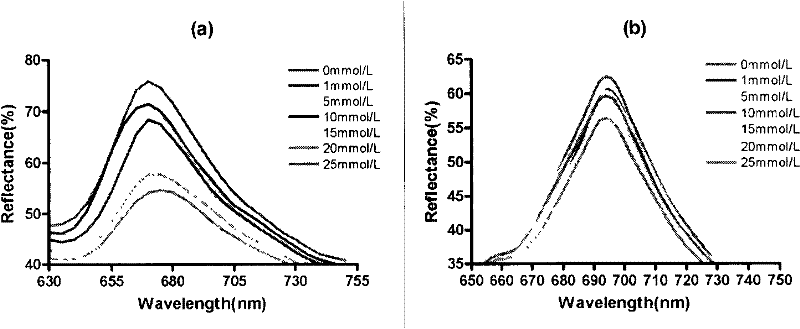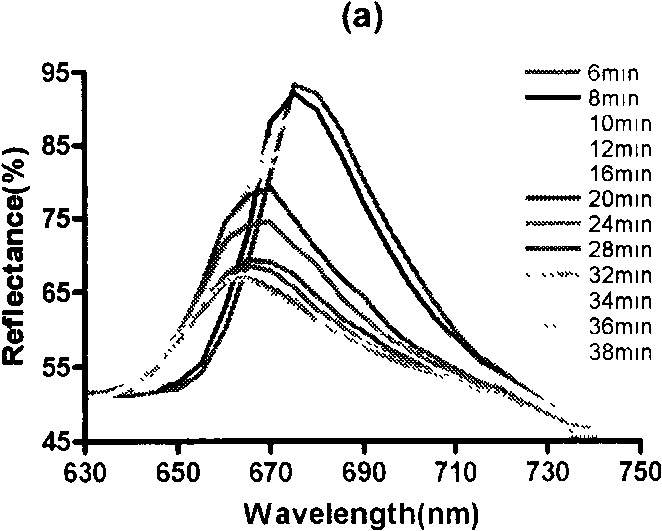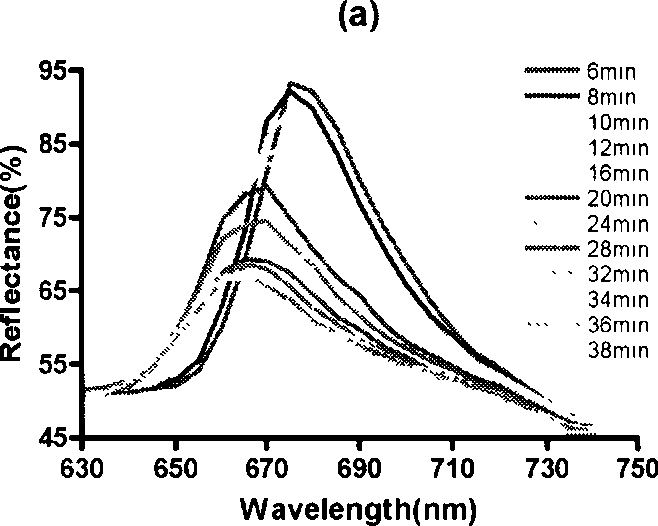Molecularly-imprinted photonic crystal for detecting organophosphorus toxicants
A technology of photonic crystals and molecular imprinting, applied in the measurement of color/spectral characteristics, other chemical processes, chemical instruments and methods, etc., can solve the problems of complex steps and high cost, and achieve the effect of convenient detection
- Summary
- Abstract
- Description
- Claims
- Application Information
AI Technical Summary
Problems solved by technology
Method used
Image
Examples
example 1
[0017] In Example 1, non-imprinted photonic crystal (NIPC) was prepared without adding MPA template molecules, and the specific adsorption performance of MPA was compared with that of MIPC. The specific operation steps are: measure 50mL deionized water into a 50ml beaker, soak the MIPC / NIPC to be tested in water; add a certain amount of MPA concentrated solution (1mmol / L) to the beaker respectively to adjust the concentration of the adsorption solution 0mmol / L, 1mmol / L, 5mmol / L, 10mmol / L, 15mmol / L, 20mmol / L, 25mmol / L. Every time the concentration is changed, measure the reflection peak intensity with a fiber optic spectrometer. It is observed that the reflection peak decreases with the progress of the adsorption. When the concentration does not change within a certain period of time, it can be considered that the adsorption has stopped. Continue to add concentrated solution to change the concentration of the adsorption solution. . Experimental results such as figure 1 As sho...
PUM
| Property | Measurement | Unit |
|---|---|---|
| diameter | aaaaa | aaaaa |
Abstract
Description
Claims
Application Information
 Login to View More
Login to View More - R&D
- Intellectual Property
- Life Sciences
- Materials
- Tech Scout
- Unparalleled Data Quality
- Higher Quality Content
- 60% Fewer Hallucinations
Browse by: Latest US Patents, China's latest patents, Technical Efficacy Thesaurus, Application Domain, Technology Topic, Popular Technical Reports.
© 2025 PatSnap. All rights reserved.Legal|Privacy policy|Modern Slavery Act Transparency Statement|Sitemap|About US| Contact US: help@patsnap.com



